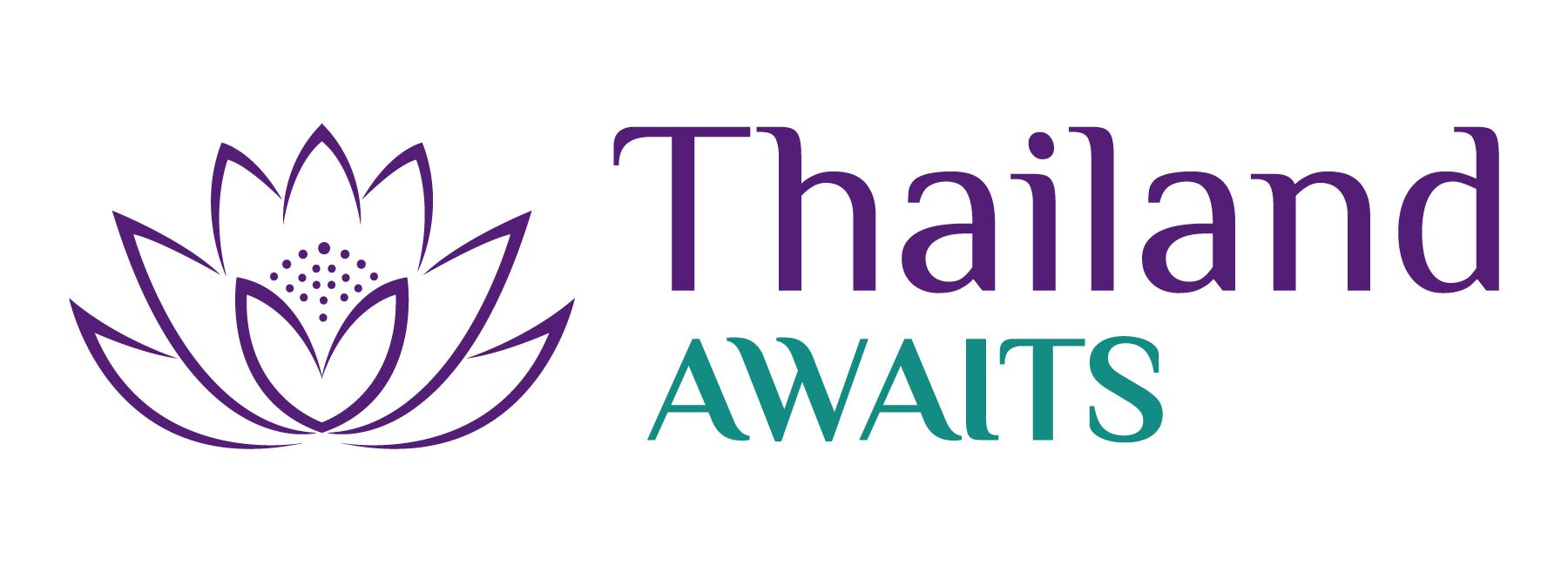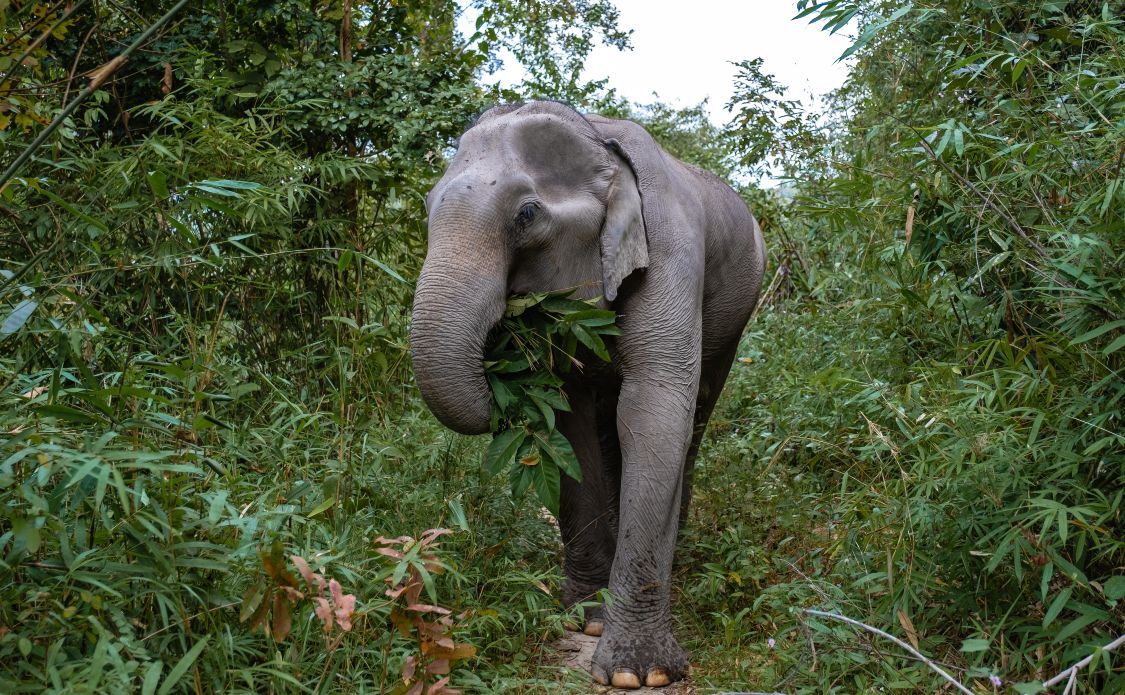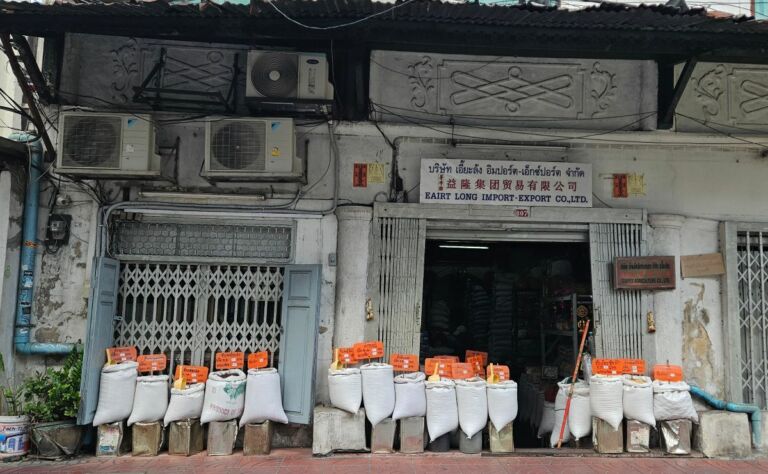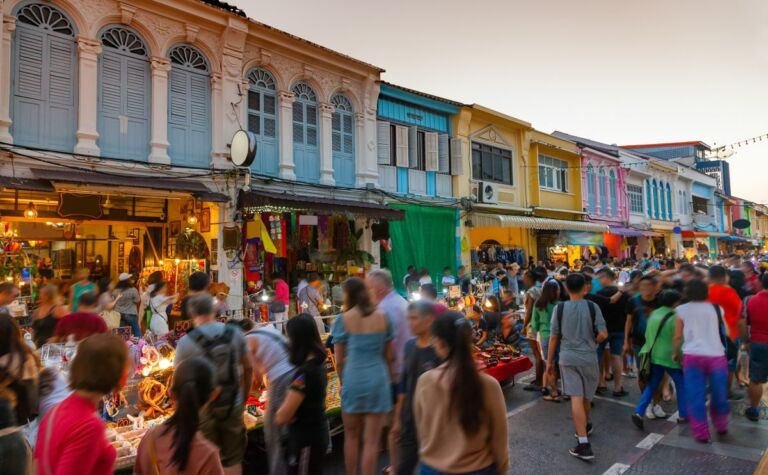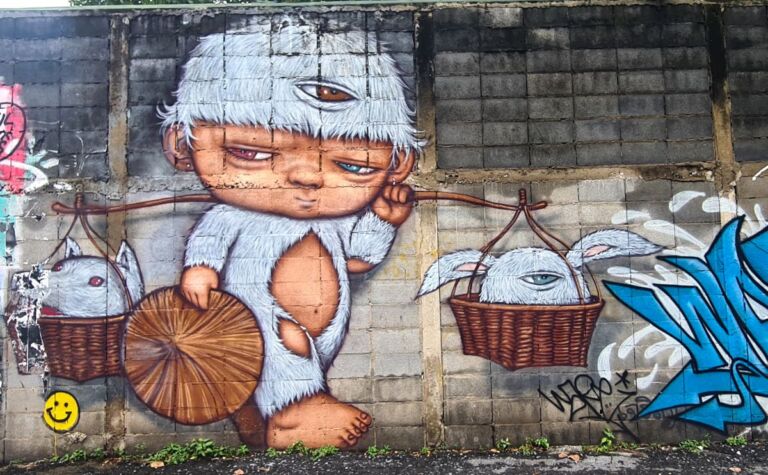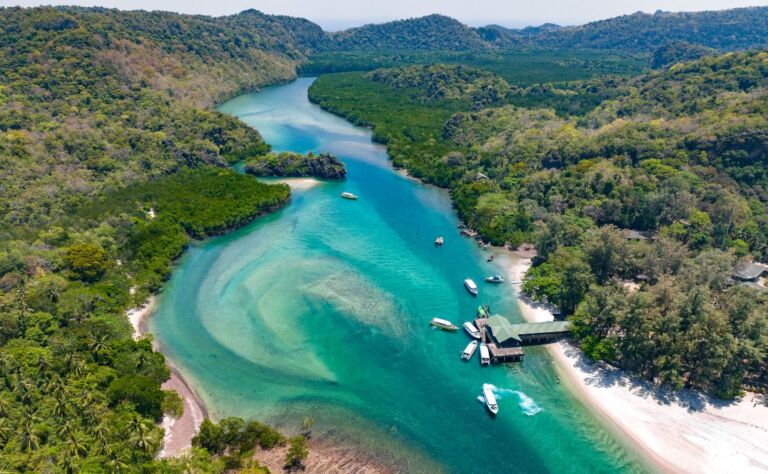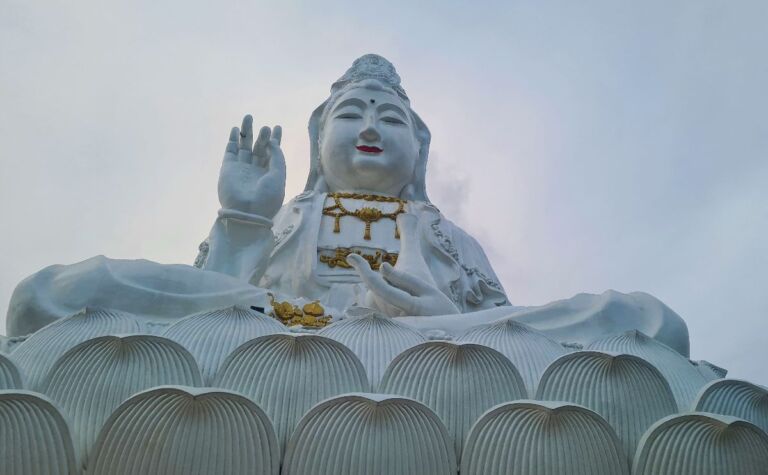7 Ethical Elephant Sanctuaries in Thailand: A Guide for Responsible Travel
Choosing an ethical elephant sanctuary in Thailand is not easy to do and if you are someone who is serious about animal welfare, then it’s worth taking some time to make sure your choice will support the elephants ethically and not encourage continued animal exploitation. Today we share some tips to help you make sure you go in eyes open and choose an elephant sanctuary that supports these gentle giants.
This page may contain affiliate links. Please see our full disclosure policy for details.
The elephant is synonymous with Thailand, and has been an important animal for the country throughout history.
Their usefulness in conflicts was exploited by Thai armies who deployed them as ‘war elephants’, effectively Asian elephants being used as nature’s tanks.
While their strength and hardiness made them indispensable tools for loggers to help them carry their timber.
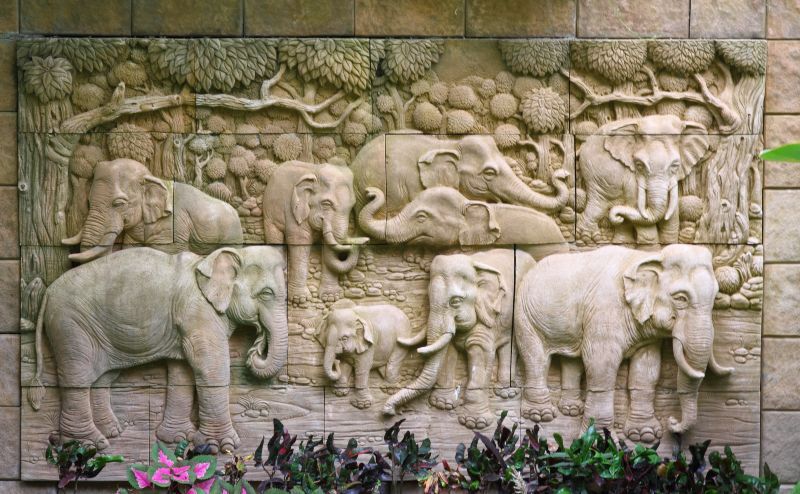
This history between Thailand and its elephants soon led to them becoming the country’s national animal of sorts, becoming entwined in national and royal iconography.
Once the lucrative logging industry was outlawed in the 1980s, elephant handlers (or mahouts) leveraged this knowledge by using their animals for the tourism trade.
Much of this elephant tourism saw elephants live in cruel conditions and forced to perform tricks and stunts including elephant riding.
Thankfully, things are changing, and several elephant sanctuaries have opened up to give elephants living conditions more akin to their natural habitat.
Why are there so many elephants in Thailand?
Sadly, while Thailand used to enjoy huge numbers of elephants, it’s no longer the case.
As of today, it’s thought that there are around 6,000 elephants in Thailand, many in the wild, however, half of that number are domesticated.
This is a significant decrease in numbers from the estimated 100,000 captive elephants from the early 1900s, let alone however many wild elephants that could have been added to that number.
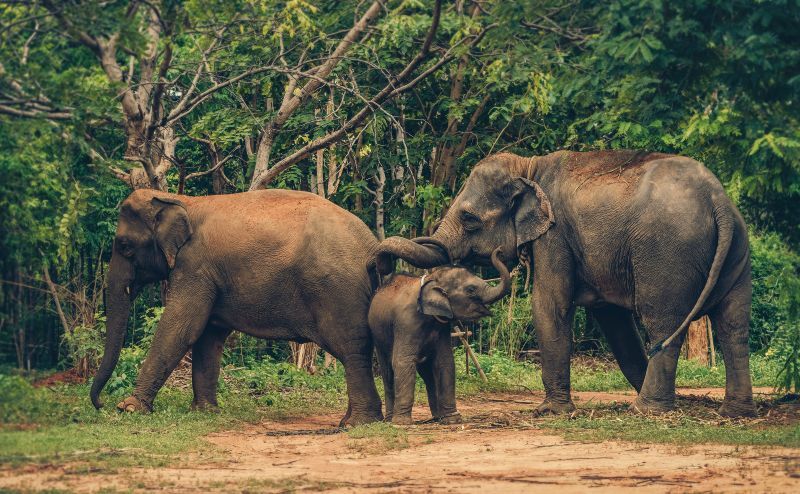
Despite the banning of logging practices, Thailand still has a problem with illegal logging. This has seen a country that was once 90% forest now offers just 170,000km2 of wild woodland.
This loss of forests, as well as the hunting of these beautiful animals, has meant that Thai elephants are now an endangered species.
Are there any real elephant sanctuaries in Thailand?
Unscrupulous elephant park owners have realized the marketing power of using descriptors such as ‘ethical’, ‘eco-friendly’, ‘rescue centre’, ‘retirement home’ and indeed ‘sanctuary’, and use them to describe parks that are anything but.
That’s not to say there aren’t plenty of truly ethical ways to see elephants in Thailand
There are many committed to ending elephant exploitation and promoting the well-being and conservation of these majestic creatures, and minimising the invasive human interaction that was formerly so commonplace.
Choosing an ethical sanctuary in Thailand
Many tours advertise swimming or bathing with elephants, and it looks like fun, but is it ethical? Let’s discuss.
Should you bathe elephants?
With more of a light shone on unethical practices such as riding elephants, some have moved to ostensibly ‘softer’ activities such as bathing with them.
Elephants love to splash and roll around in the water, but like us, are less keen when a group of strangers are pawing at them at the same time.
While it can seem harmless to bathe alongside them, take a moment to consider how the elephants are bathing at an often scheduled time, and won’t leave the water while the tourists are present.
This is because they’ve been trained to do so. It’s not natural for elephants to be so submissive to humans, unless they’ve been subjected to cruel training methods.
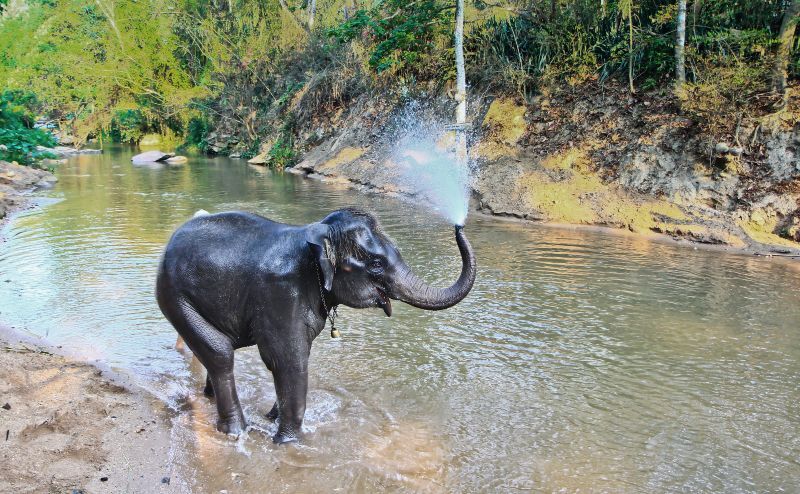
Should you swim with elephants?
Just as you shouldn’t expect to bathe an elephant, neither should you swim with them.
While elephants love to swim and bathe, they also like to do it when they want, and with an element of peace and quiet.
If they’re being forced to do it by their mahout in an elephant park, then you can be fairly sure that they’ve been coerced in a less-than-ethical manner.
Which is the best elephant sanctuary in Thailand?
Luckily, there are now several recommended ethical elephant sanctuaries in Thailand. Which you find best will depend on how much time you have and which part of Thailand you are visiting.
If you choose to visit one from the list below though, you can be sure of a wonderful time safe in the knowledge that the elephants have been treated well.
We had visited Thailand several times and not visited any elephant sanctuaries because we wanted to be sure we chose a truly ethical one and never got around to researching enough before our trips.
Now we are moving to Thailand for a year (or more) and we have much more time.
We have chatted with some of the operators listed below to learn from them what to look for when choosing which parks to support.
You could also research animal welfare sites to be sure you have a list ready to go while we are travelling.
Elephant Parks in Northern Thailand
The lush forests and less developed landscape of Northern Thailand are home to some excellent sanctuaries.
Elephant Nature Park, Chiang Mai
Providing a home for elephants rescued from mistreatment in the tourist trade and now home to over 100 this was the first of the ethical elephant sanctuaries in Thailand established.
It opened back in 2003 after its owner Lek began working with injured elephants in 1998.
The park offers several experiences, including their ‘Hands Off’ project, single day, and a 7-day volunteer experience.
Where: 1 Ratchamanka Rd, Tambon Phra Sing, Mueang Chiang Mai District, Chiang Mai
Contact: Visit their website for more
Burm and Emily’s Elephant Sanctuary, Chiang Mai
Visitors to Burm and Emily’s Elephant Sanctuary (BEES) usually stay for at least two days and one night. Day visits are available, but they must be booked well in advance directly with the sanctuary.
The main activities here are observing the elephants in the forest, and helping clean and prepare their feed.
Visitors to the Observation Walk Day Program can view the elephants from a special observation tower that doesn’t disturb them.
Along with the elephants, you may meet other rescued animals. The multi-day visits can include a cooking class, gardening, helping plant trees, and other tasks around the sanctuary.
Where: Tambon Chang Keung, Mae Chaem District, Chiang Mai – You MUST pre-book
Contact: Find out more here.
Friends of the Asian Elephant Hospital, Lampang
As their name suggests, the staff at the Asian Elephant Hospital treats injured elephants and gives them a better life.
Friends of the Elephant Hospital was founded by Soraida Salwala in 1993 and was the first of hospital established to treat sick elephants in the world.
Don’t confuse this with the Thai Elephant Conservation Centre, which is adjacent and forces elephants to perform for visitors.
Where: 295 Moo 6 Lampang-Chiangmai Road Viengtan Hangchatr Lampang
Contact: You can reach out to the hospital via their Facebook page
Mahouts Elephant Foundation, Mae Sot
The founders of the Mahouts Elephant Foundation, the Blaine family from England, worked with the Karen indigenous mahouts in Mae Sot to create a safe home. Their foundation story is an interesting one that we encourage you read on.
This is a great choice for anyone who has time for a longer immersive experience with both a 4-day or 7-day mountain stay in a Karen community.
Where: near the border between Thailand and Myanmar
Contact: Visit their website for more details
Boon Lott Elephant Sanctuary, Sukhothai
At Boon Lott’s Elephant Sanctuary (aka BLES) the elephants enjoy over 600 acres of forests and rivers to roam in. Guest numbers are kept low to ensure elephant welfare and to allow for positive experiences.
Bles was founded by British woman Katherine Connor who had previously volunteered at a Chiang Mai elephant hospital.
Boon Lott means survivor in Thai and was named after a baby elephant that Katherine met before opening the sanctuary.
There are currently 10 elephants in the herd at BLES. A visit allows you to meet retired and rescued elephants in their natural environment.
Your experience will include walking with the elephants through the protected forest habitat and helping with their care, but you do not bathe or feed them.
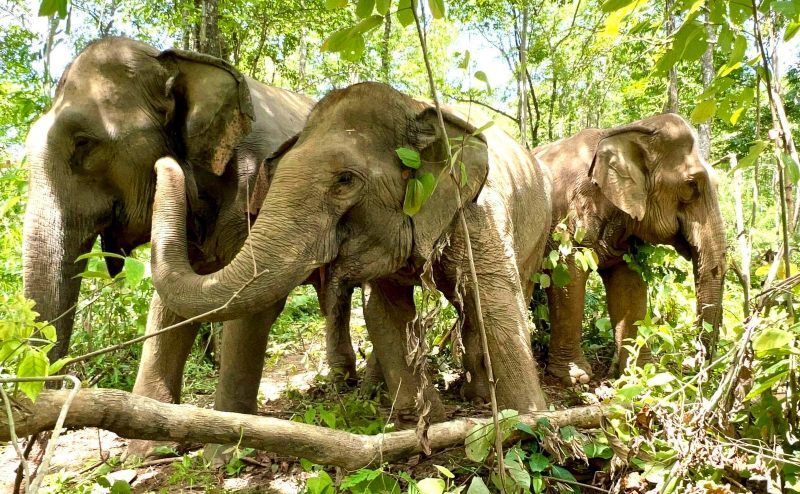
Guests stay for 5 nights spending their time helping with work related to caring for the elephants.
A maximum of 10 guests can visit at any time which allows each guest to spend time with and get to know the mahouts, locals from the village, who care for the elephants here.
You may also get to help with other animals like cats and dogs.
Where: Sukhothai Province – about 8km from the village of Baan Tuek
Contact: Find out about visiting BLES here
Elephant Sanctuaries in Southern Thailand
There are many elephant camps and “experiences” in southern Thailand especially in the tourist towns, places like Pattaya, and the islands of Phuket and Koh Samui.
Choosing ethical ones can be more challenging and perhaps there are some we have missed from our list, as thankfully this is a developing situation.
As people are educated about elephant treatment these businesses are slowly becoming more humane and will continue to do so if guests stop requesting things like rides and bathing.
Phuket Elephant Sanctuary, Pa Klok Phuket
There are several elephant parks in Phuket, so how do you know which Phuket elephant sanctuary is ethical? Well, this one is! We think Phuket Elephant Sanctuary is the best in Phuket.
I just wish it had a more distinctive name so it was not so easily confused with the many unethical ones.
A home for rescued elephants, this sanctuary is owned by Mr. Montri Todtane and is a genuine success story of change.
Mr Todtane had previously owned an elephant riding camp, but changed his views in 2016 to create this elephant jungle sanctuary.
These days he promotes the most hands-off experiences in Phuket including only one very limited feeding opportunity on their half-day tours but heavily promoting observation over interaction.
Phuket Elephant Sanctuary is home to Thailand’s longest canopy walkway (600m) where you can watch the elephants from above. This is by far the most ethical elephant experience in Phuket.
There are currently 12 elephants on this 30-acre sanctuary and a number of experiences from half day with a brief feeding session to 90-minute canopy walks and observation-only sessions.
There is also a 7-day volunteer program.
Where: 100, Moo 2, Paklok, Thalang, Phuket Thailand
Contact: Find out how to join in here.
Samui Elephant Sanctuary
This is the first ethical elephant sanctuary in Koh Samui. It has two locations, the first in Bophut in 2018 and a new location in Chaweng Noi in 2020.
There are 6 or more female elephants at each site. Most used to be involved in the logging industry.
Both sites offer half-day morning and afternoon sessions where you learn more about Asian elephants, prepare some food for them, and take a walk with them. There is no bathing.
They are associated with the Save Elephant Foundation.
Where: Bophut and Chaweng Noi – Hotel pickup included
Contact: Find out more here
How to find the best elephant sanctuary
The best elephant sanctuary is the most ethical elephant sanctuary. To that end, there are a few questions to ask that will inform you of how well a park looks after its animals.
- How many interactive activities (such as riding, bathing, or touching) can visitors do with the elephants? If the answer is more than zero, then it’s generally an unethically run park.
- Does the sanctuary look like an elephant’s natural habitat? You don’t need to be an expert here. Just ask yourself if it’s closer to a lush woodland than it is to a concrete jungle.
- How much room do the elephants have? Not only are they large creatures, but elephants also like to roam around too. If an area seems restrictive to you, then it almost certainly will to a creature many times your size.
- Do the elephants have the facilities to engage in their normal activities? Elephants love to roll around in the mud, bathe, and scratch up against trees. A barren patch of grass does little to stimulate these intelligent creatures.
Ethical Elephant Sanctuaries in Thailand – Verdict
The sanctuaries mentioned in this post barely touch the surface of the elephant-based attractions based in Thailand.
While there are still regrettably too many exploitative elephant parks, it’s heartening to see change happening with the rise of just as many ethical parks.

There’s one simple way to determine between a tourist-centered elephant nature park and a truly ethical elephant sanctuary. That is in how much human interaction the animals have.
While getting as close to these majestic animals as possible is tempting, we have to remember what is best for the elephants.
Let them enjoy their space as nature intended, and marvel at their true behavior, rather than an unnatural sideshow.
Find out more about Ethical Elephant treatment at Peta (People for the Protection of Animals)
Keep Planning Your Trip to Thailand
- 42 Bangkok Tips For First Timers: Must-Read Guide
- How To Get Around Bangkok: Public Transport For Visitors
- The Chao Phraya Tourist Boat: Sightseeing Tips For Every Stop
- 12 Things to Know Before Going to Thailand
- Simple Thai Words and Phrases for Traveling in Thailand
Ready to start planning your Thailand trip? Our Facebook community Thailand Awaits is here to help. Join fellow travellers, get your questions answered by Thailand experts, and access free planning resources.
